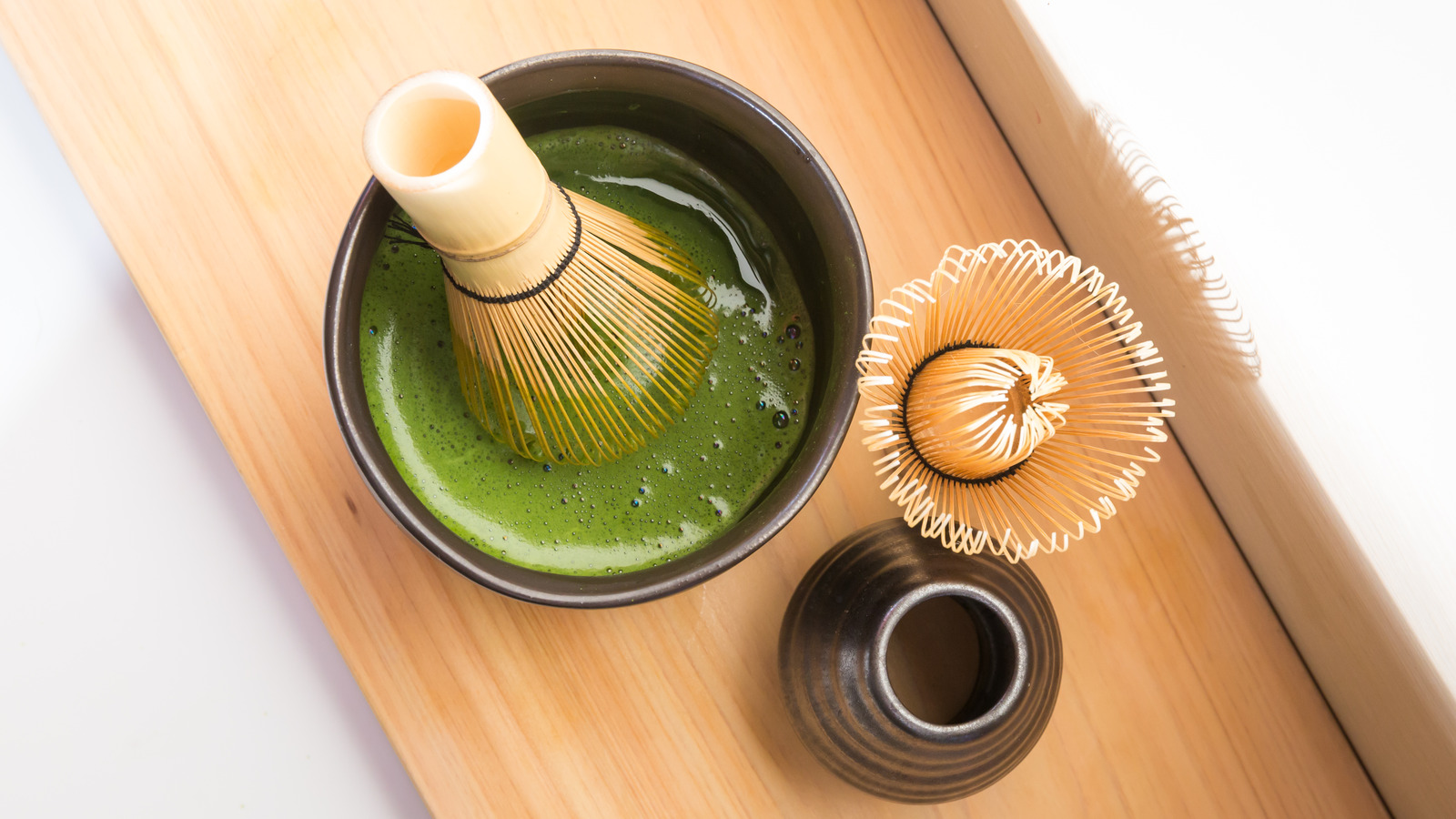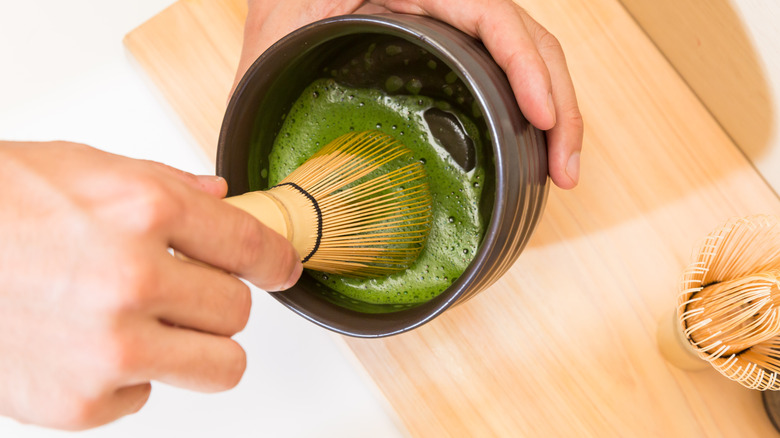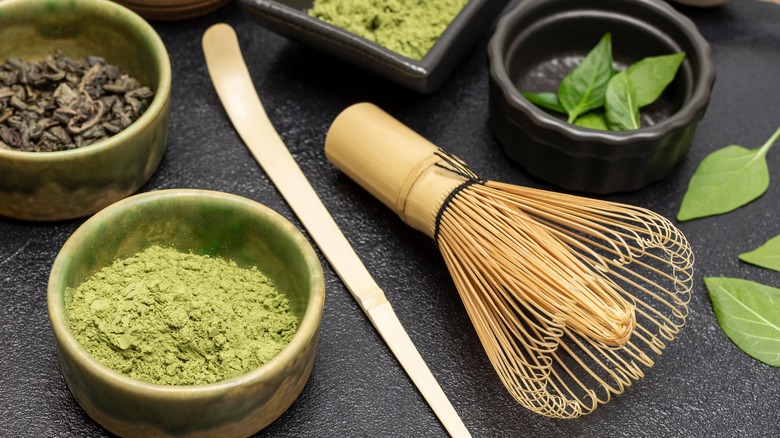Matcha may be having a moment right now, but it is not a passing fad. The green tea powder has been produced for nearly 1,000 years, dating back to the 12th century, and was first consumed by a Buddhist monk in Japan who found the drink beneficial to his mediation. The tea is an integral part of Japanese tea ceremonies, and is often used in religious practices. Beyond this, matcha has also found a niche in the culinary world, and has been used to flavor ice cream, candies, overnight oatmeal, lattes (add strawberry for springy twist to your matcha), and mochi, among other foods. Still, matcha is most often found in its tea form, beloved for its frothy texture and complex rich green taste. It is also prized for its unique and intricate preparation method, which requires several pieces of specialized equipment.
Perhaps the most important item in a matcha kit is the matcha whisk, or chasen. The chasen isn’t just any old whisk, but a specialty piece of equipment made specifically for matcha preparation. Traditionally, a matcha whisk is made from bamboo, which has been peeled and cut into prongs. These prongs help to froth the matcha and water, reducing bitterness and bringing out matcha’s unique taste. However, if you don’t know how to properly use the whisk, you won’t be able to reap its rewards. To make the most of your whisk, you should soak it in warm water prior to use. Doing so, even for only 30 seconds, will help soften the bamboo prongs, making your whisk better able to froth up and de-clump your matcha.
Why soaking your whisk matters
Of course, there is more to handling a matcha whisk than simply soaking it for a minute or so prior to use. There are a great number of things to consider when using a chasen. Let’s start with the whisk itself. These bamboo whisks are one of the most vital pieces of equipment in the craft of matcha making. Matcha whisks vary widely in quality, with the best chasens being made by artisans. They can last for years, while less expensive whisks may only last for a few batches. However, even if you can only afford a cheaper whisk, this doesn’t mean that you can’t make a mean cup of matcha, especially if you take care to properly prepare and maintain it. A well-maintained whisk can last for years at a time.
Soaking your whisk before use will help improve its longevity as it softens the bristles, making them less likely to break during use. Soaking it in warm water will help to make the bristles less stiff, allowing for better motion and frothing. And a better froth means better flavor. A properly mixed bowl of matcha allows for the tea’s flavor to fully bloom, reducing its naturally bitter taste, breaking up clumps of powder, and bringing out a more mellow flavor.
How to use your whisk
Soaking your whisk is just one part of proper use and maintenance of this vital matcha making tool. It’s also important to whisk your matcha with proper technique. Once your chasen has been softened by soaking in warm water, add in your matcha powder to your bowl, then add in the water and begin mixing. Move your whisk in a zig-zag shape in the bowl, being careful to not scrape your whisk against the bottom or sides of the bowl. Scraping can cause your bamboo whisk to splinter or break. Mixing in the proper shape, in zig-zag or M-shaped motions, rather than in a circle, will allow for maximum frothing and fewer clumps.
Then, there is the matter of cleaning your whisk, and this is just as important as preparing or using it. Once you’ve mixed your matcha, you should immediately clean your whisk. Do not use soap or detergent; simply rinse your whisk with warm water and place on a whisk holder to dry. Do not store your whisk when wet and don’t store it in a damp place, as this may cause mold to form on your whisk. Instead, allow your whisk to fully dry before placing into its container. Instead of washing in water, if mold is particular concern, you can also clean your whisk with vinegar. Make sure to store your whisk in a cool, dry area, and dispose of your whisk if it begins showing signs of mold, or if its prongs begin to break.







